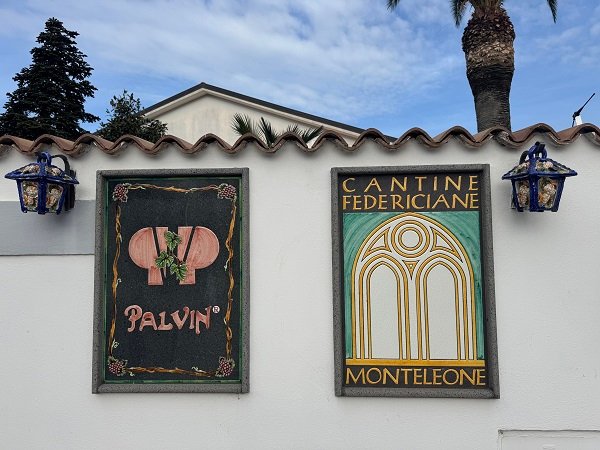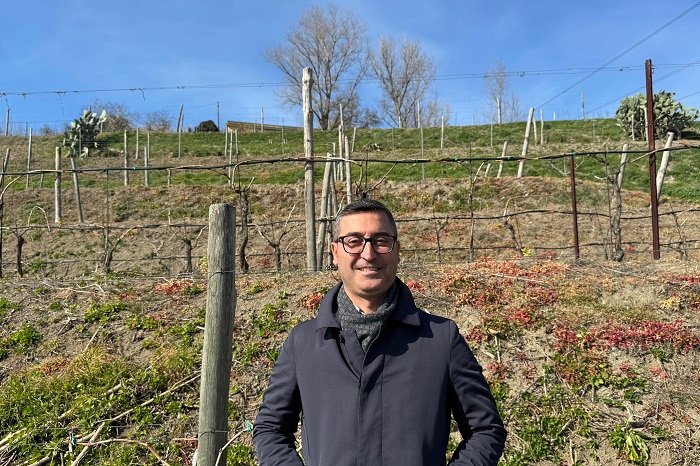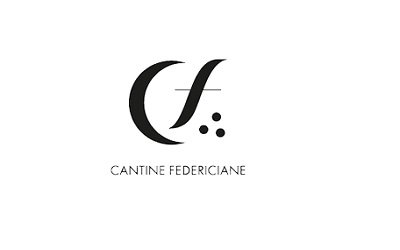Antonella Amodio tells us about the Palumbo family’s Cantine Federiciane 1951 and the new Vigna Cigliano Solfatara wine project in the Campi Flegrei.
“Cantine Federiciane is a journey that begins with the passionate work of four generations of farmers united by one great dream: that of retracing the history of the vineyards and winemakers of the province of Naples, rediscovering their great value.” With these words he welcomes me to the winery Antonio Palumbo, who leads Cantine Federiciane in Marano di Napoli along with his brothers Luca and Marco.
It all started with Paolo Palumbo, who in the early twentieth century devoted himself to selling wine in demijohns in Bacoli, in the Phlegraean Fields, the family’s place of origin. Only later, with the advent of the new generation, did the winery establish itself as an important entity, strengthening the house brand over time. Today the winery boasts 10 hectares owned, 5 hectares leased and 25 hectares under management of the 66 bestowers of the Sorrento Peninsula and Campi Flegrei.
Luca, oenologist, Marco, administrative manager, and Antonio, sales expert, have revolutionized the company by investing in vineyards, technology and research. The last project concerns the vineyard in Cigliano, an area of just over 6 hectares located on the hillside overlooking Vesuvius, the Gulf of Naples, Capri and Pozzuoli’s Solfatara.
Vineyard at Cigliano in Phlegraean archaeology.

The vineyard, fragmented into plots, skims the walls of the Astroni crater, while Posillipo further enriches the landscape. Monte Cigliano is a quiescent volcano that lies within the Campi Flegrei complex, between the natural oasis of Astroni and Monte Gauro. It is not far from Montagna Spaccata, an opening in the rock made by the ancient Romans to create a carriage road. And it is a short distance from the ancient Roman villa Pretorio di Falcidio.
A vineyard, then, that immerses itself in Phlegraean archaeology, absorbing the essence of the Solfatara volcano fumaroles, that of history and traditions. In this context also rich in biodiversity, Vigna Cigliano Solfatara, located on thin, sandy, dark, nutrient-rich volcanic soils, produces two wines: the Vigna Cigliano Solfatara Campi Flegrei Rosso, made from Piedirosso, Aglianico and Marsigliese (local biotype) grapes, and the Vigna Cigliano Solfatara Campi Flegrei Bianco, a blend of Falanghina, Bombino, Greco, Verdeca and Montonico.
Two classy cru

These varieties are grown among the Phlegraean hillside rows, where these cultivars once thrived, as evidenced by Rauscedo Nurseries’ study of unearthed historical scions and some 100-year-old, pre-phylloxera plants. A way to make reviving an old abandoned vineyard which the Palumbo family strongly wanted and which highlights traditions and brings to light extraordinary places that are flagships of Campania’s viticulture. Two crus that spring from this hillside immersed in silence and are worth tasting. They are presented in the 2020 vintage, the first, and tell the story of the extraordinary Phlegrean land, expressing class and style, charm and suggestion.
Also not to be missed is the Spumante Metodo Classico Flegreo. Made from Falanghina grapes, the first produced in the Campi Flegrei, whose grapes come from vineyards located on the Camaldoli Hill, Cuma and Monteruscello. Cantine Federiciane also owns 4 hectares in Sessa Aurunca, in the province of Caserta. At the foot of the Roccamonfina volcano, where Primitivo grapes are grown. Roccia Madre, a label representing the other volcanic dimension of Campania, is produced here.
Total production of the company’s entire range, including Doc and Igt, with Lettere and Gragnano at the forefront, is around 350,000 bottles.






